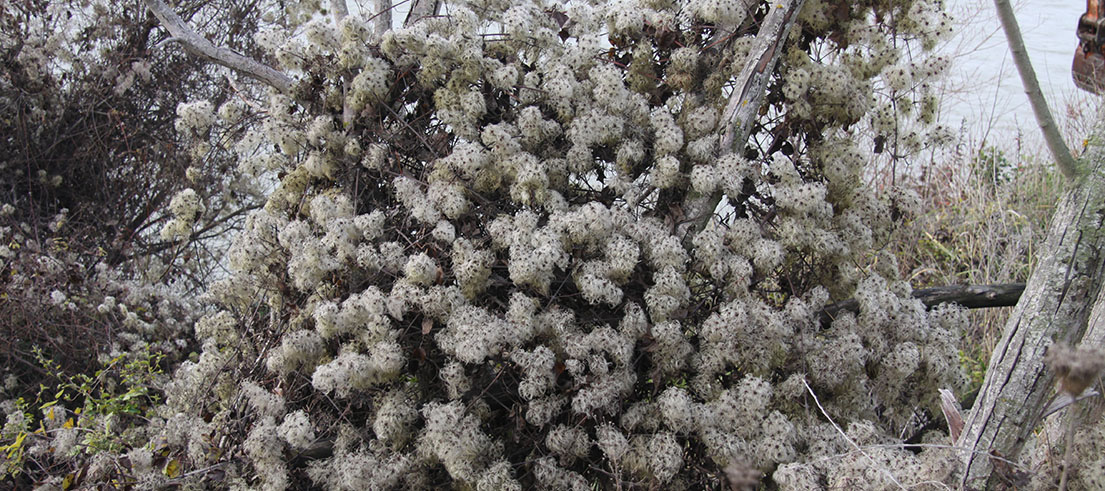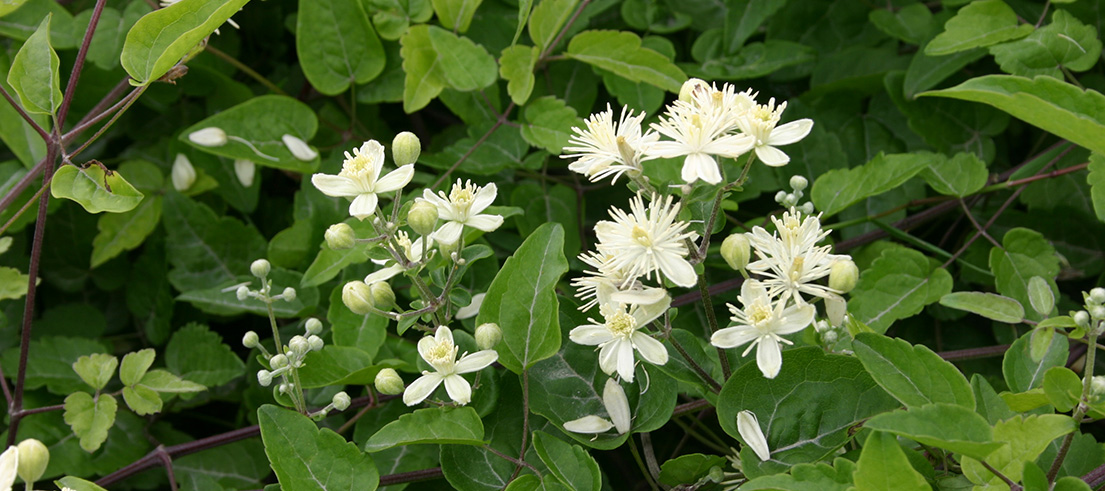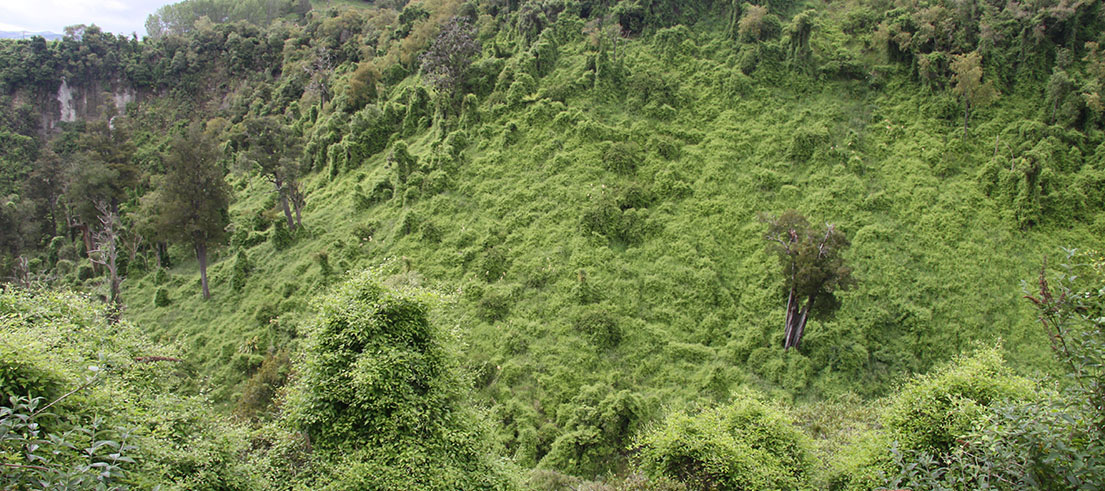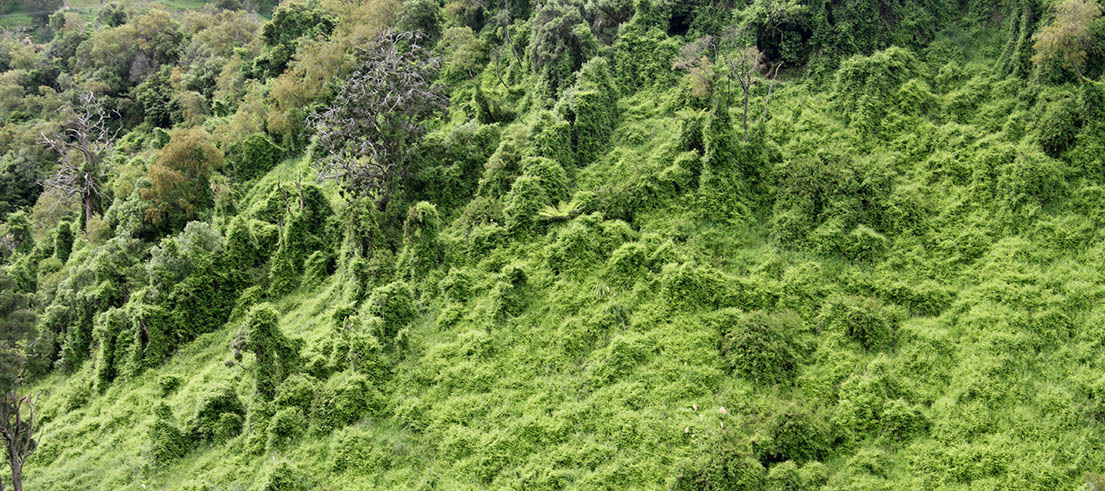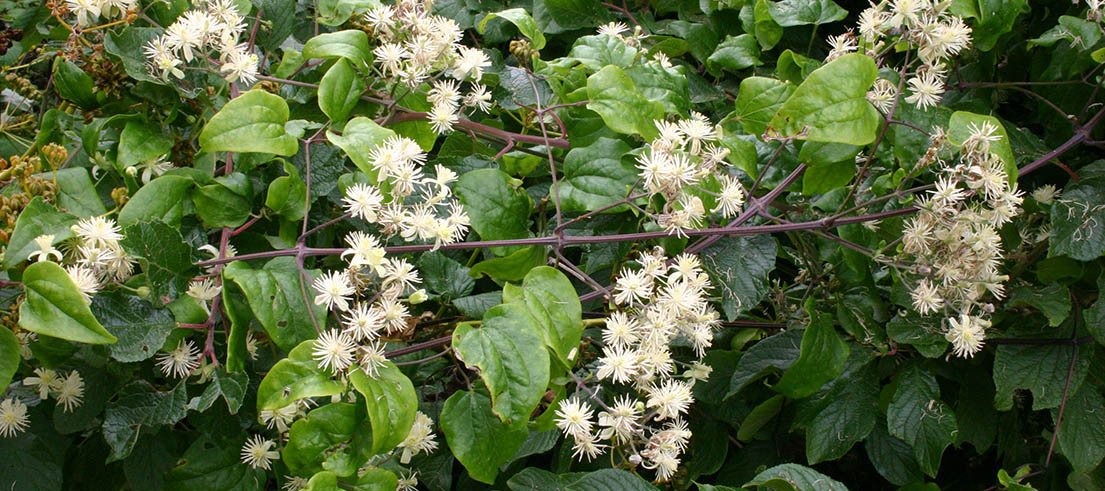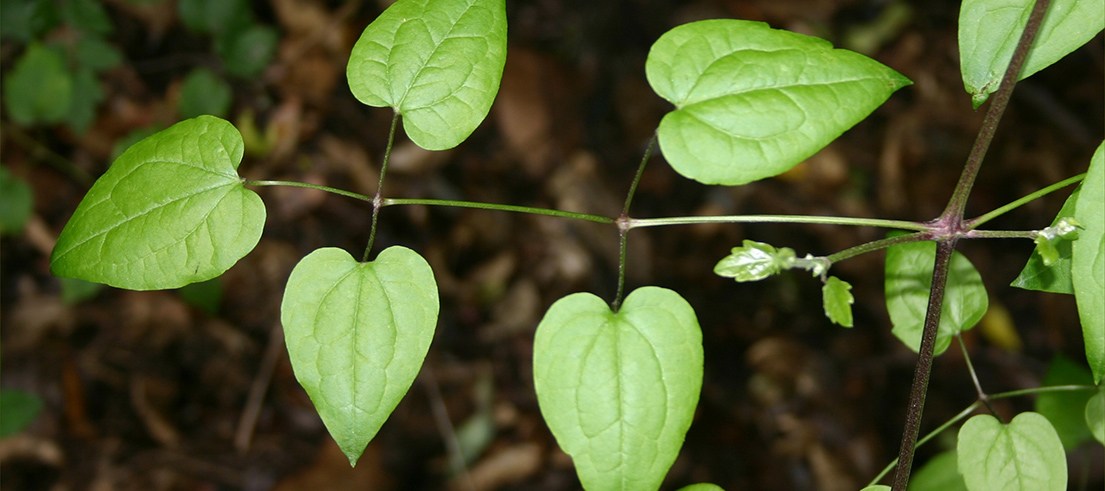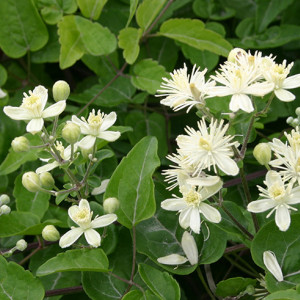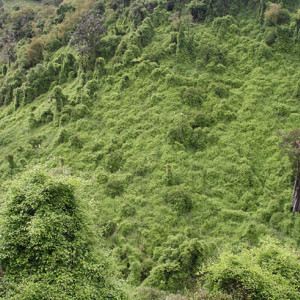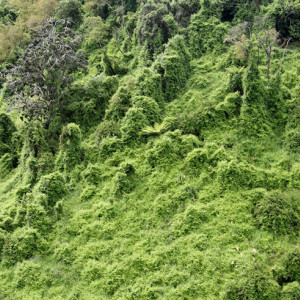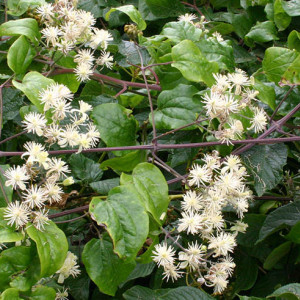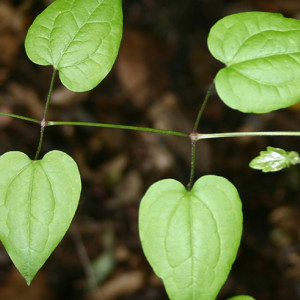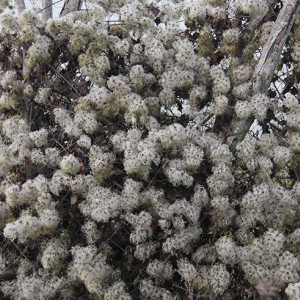Old man's beard is a deciduous climbing vine, less than 20m long, attached to the host by leaf tendrils and hangs like a curtain. It kills desirable trees and shrubs and prevents native seedling establishment.
Description
- Young vines are ribbed, often with a purple colour, older vines are often grey/brown in colour and flake when bent.
- Five leaflets per stem whereas most native Clematis only have three leaflets per stem.
- Flowers are creamy white, less than 3cm in diameter and found from December to April.
- Seeds are about 3mm long, bear distinctive white fluffy plumes and are dispersed in autumn and winter.
- Seeds are dispersed by wind and water and can remain viable in the soil for up to five years. Stem fragments with soil contact can cause vegetative spread.
- Habitats include shrublands, forest margins, canopy gaps, along waterways, fences, hedgerows, gardens, roadsides, wastelands, and farmland.
What you need to know
Biodiversity and recreation concern, grows rapidly, smothering desirable trees and shrubs, eventually killing them, and prevents native seedling establishment. One plant is capable of blanketing an area of 180m2.
Management approach
This is a declared pest managed under the Canterbury Regional Management Plan 2018 – 2038 (PDF file, 10.6MB) within the sustained control programme and site led programmes
Sustained control
Pests in the sustained control programme vary greatly in their distribution across the region. Some are found in low numbers, while others are already well-established pests. The intention of the sustained control programme is to reduce the impact on values and spread of a pest onto neighbouring properties.
Site led
Exclude, eradicate, contain, reduce or control a pest within a specific place to the extent that doing so protects the values of that place.
Rules
Land occupiers need to destroy old man’s beard infestations that cover less than 100m2 in area and infestations that are within 20m of an adjoining property.
Any species declared a pest cannot be sold or be in a place where plants are being sold. Pest plants cannot be propagated, bred, multiplied, communicated, released, caused to be released, or otherwise spread.
Consider lower-risk alternatives for your garden, such as native plants.
Control
Site Management
Follow up treated areas three times per year. Encourage natural regeneration of native plants or replant treated areas where possible after two to three treatments to establish dense ground cover and minimise reinvasion.
Physical control
Trace all vines back to ground level, clear a small area around the vine’s base and cut all vines at ground level and aerial vines at waist height. Ensure that the hanging vines are clear of the ground so that they cannot take root.
For small infestations dig out roots and pull out seedlings.
Plant parts requiring disposal: vines, roots, and seeds.
Contact your local council for appropriate disposal locations.
Chemical control
No qualifications: Treat by painting freshly cut stumps with an appropriate herbicide e.g., glyphosate.
Caution: When using any herbicide or pesticide please read the label thoroughly to ensure that all instructions and safety requirements are followed.
Biological control
Keep an eye out for these biological control agents:

